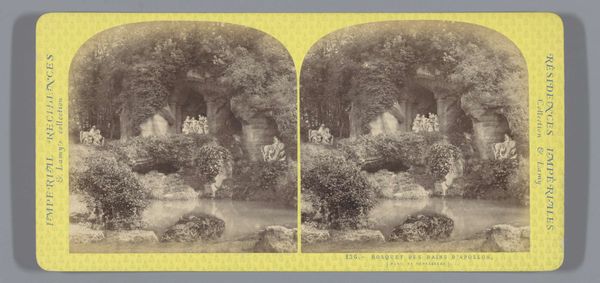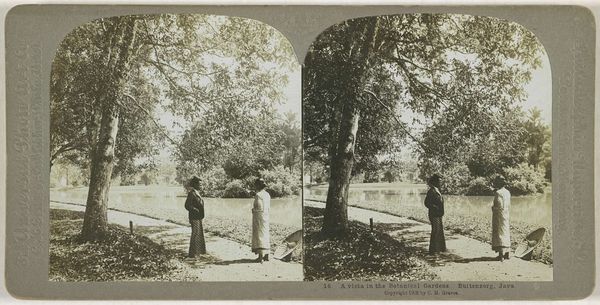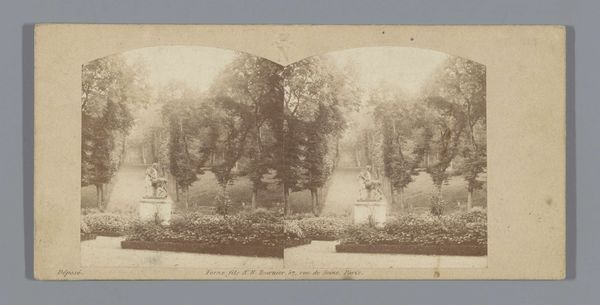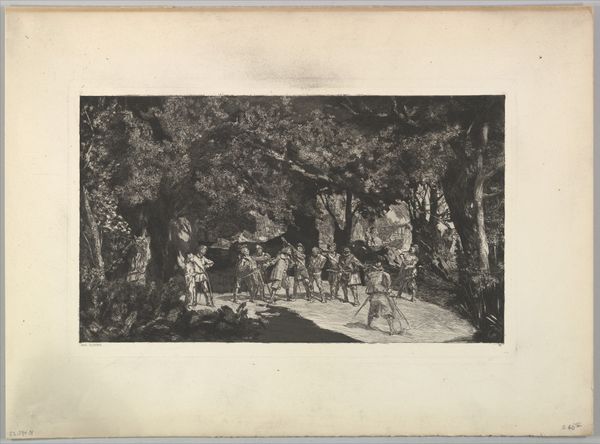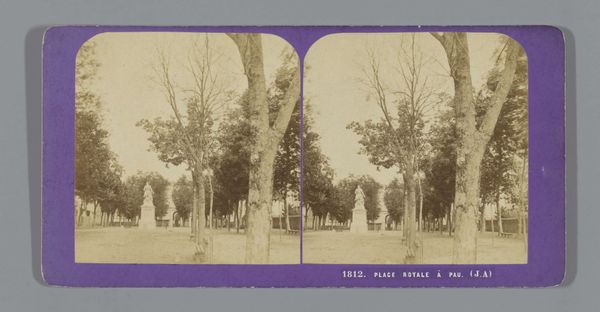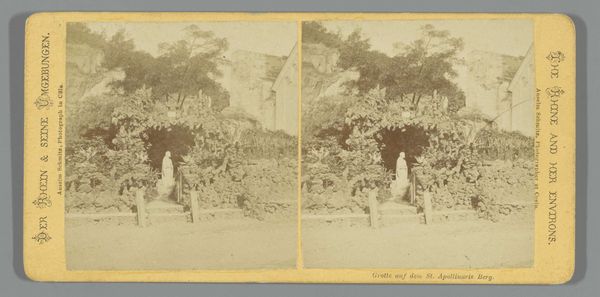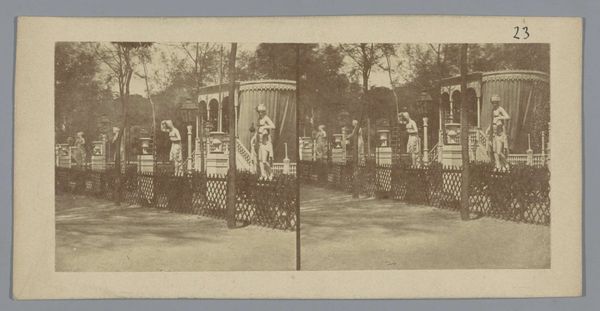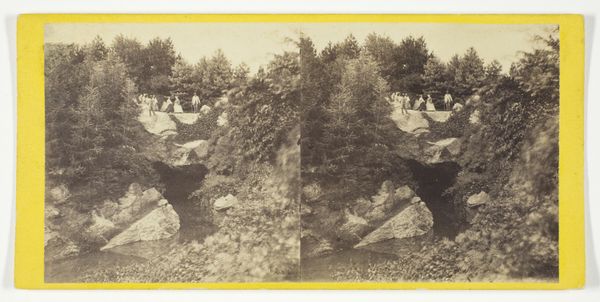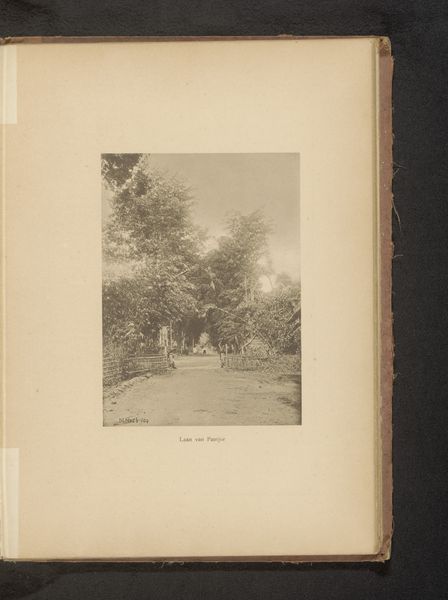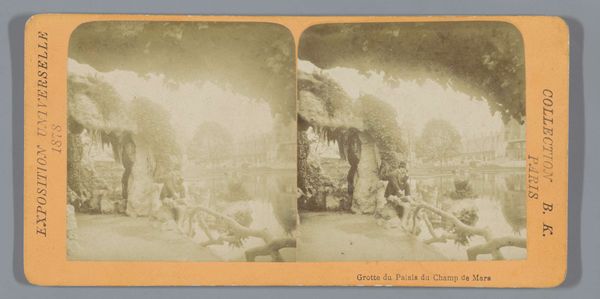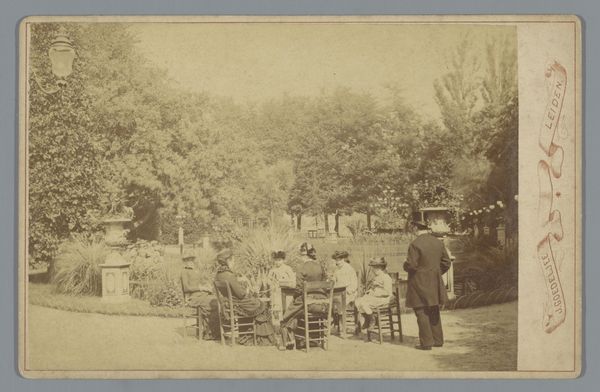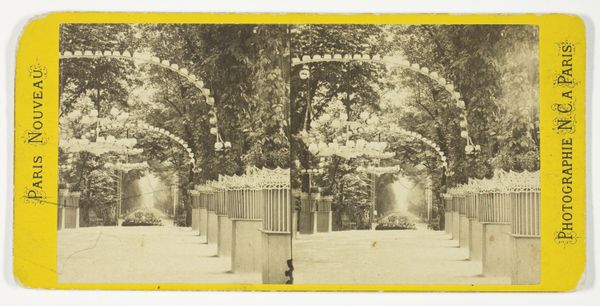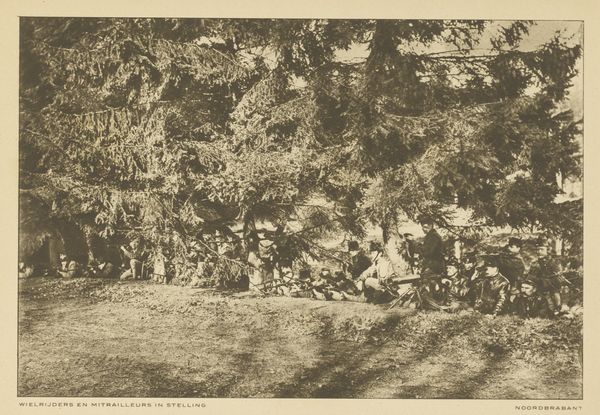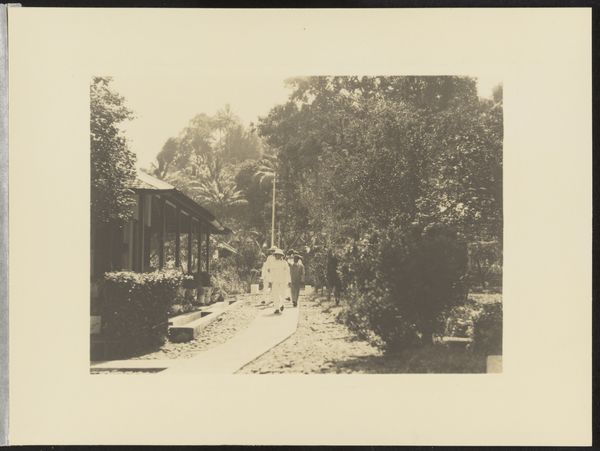
silver, print, plein-air, photography, albumen-print
#
16_19th-century
#
silver
# print
#
plein-air
#
pencil sketch
#
landscape
#
photography
#
orientalism
#
france
#
men
#
natural palette
#
albumen-print
Dimensions: 7.9 × 7.7 cm (each image); 8.7 × 17.7 cm (card)
Copyright: Public Domain
This stereoscopic photograph of the Garden of Olives in Jerusalem was made by Félix Bonfils sometime in the 1860s using the wet collodion process, a popular technique in early photography. The process involved coating a glass plate with a mixture of chemicals before exposing it in a large format camera. Each print required an immense amount of work, from preparing the glass plate to developing the image immediately after exposure, and the labor certainly contributes to its unique aesthetic and historical significance. The resulting albumen print, with its sepia tones and rich details, gives the image a timeless quality, while also reminding us of the labor and skill involved in its creation. Stereoscopic photographs were particularly popular at this time, as the dual image offers a unique depth, creating an immersive experience for the viewer. Bonfils mass-produced such images for Western tourists, playing an important role in shaping European perceptions of the Middle East. By understanding the materials and processes behind this photograph, we can fully appreciate the artistry and cultural context in which it was made.
Comments
No comments
Be the first to comment and join the conversation on the ultimate creative platform.
